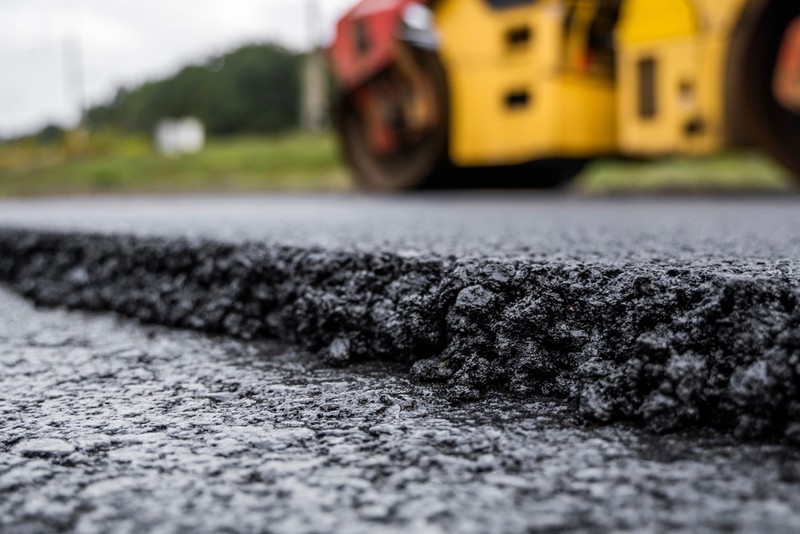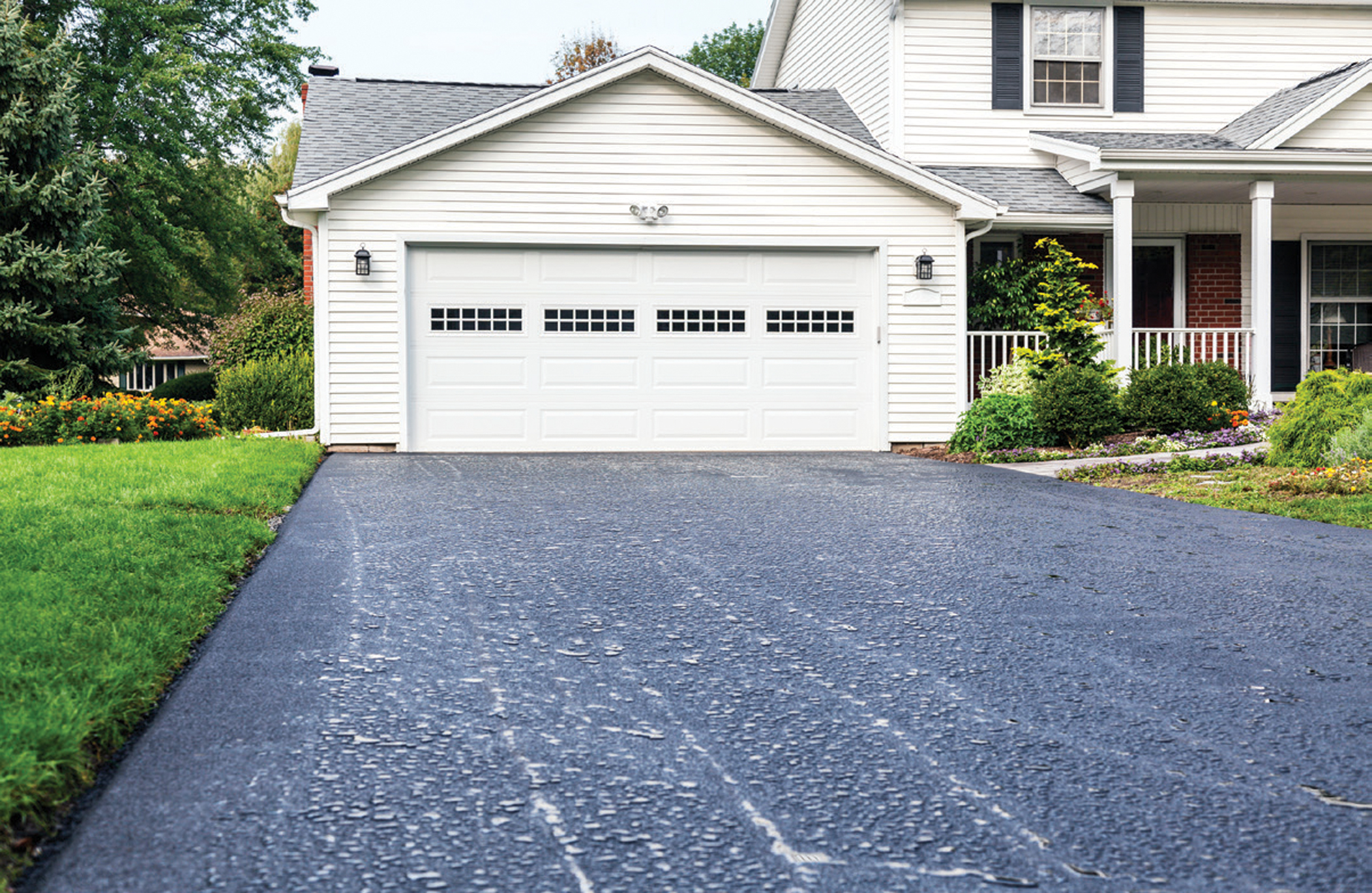Revitalize Your Residential Property with Regrading and Asphalt Sealing Strategies
Revitalize Your Residential Property with Regrading and Asphalt Sealing Strategies
Blog Article
Hot Mix Asphalt: A Lasting Remedy for Sidewalk
Warm Mix Asphalt (HMA) has become a leading sustainable option for pavement services, supplying a myriad of innovative innovations and ecological advantages. Its ability to decrease and reuse products energy consumption offers a compelling case for its fostering in roadway building and construction tasks. The lasting performance and longevity of HMA make it a favored alternative for facilities development. As the demand for environment-friendly building practices expands, checking out the nuances of HMA's sustainability can offer valuable understandings into the future of pavement solutions.
Ecological Benefits of Warm Mix Asphalt

Moreover, Hot Mix Asphalt assists to mitigate city heat island effects. Its dark shade absorbs sunshine, reducing the quantity of warm reflected back right into the atmosphere compared to lighter-colored sidewalks. This can lower ambient temperature levels in metropolitan locations, decreasing the need for cooling and ultimately reducing power consumption.
On top of that, Warm Mix Asphalt contributes to improved stormwater administration. Its permeable nature permits water to infiltrate the pavement and charge groundwater supplies, minimizing drainage and the threat of flooding. These environmental benefits make Hot Mix Asphalt a sustainable choice for paving freeways and roadways.
Energy Effectiveness in HMA Manufacturing
Is energy performance an essential factor in the production of Warm Mix Asphalt (HMA)? Energy plays a significant duty in the manufacturing of HMA, influencing both price and environmental sustainability. One key facet of energy efficiency in HMA manufacturing is the usage of warm mix asphalt (WMA) modern technologies.
Furthermore, developments in plant modern technologies have actually led to even more energy-efficient HMA production procedures. By enhancing power use in HMA production, the sector can minimize its carbon impact while maintaining high-grade sidewalk materials.
Recyclability of Warm Mix Asphalt
The recyclability of Warm Mix Asphalt (HMA) is a critical facet of its sustainability and long-term ecological impact. HMA is among one of the most recycled products in the USA, with over 100 million lots of redeemed asphalt sidewalk (RAP) being recycled annually in new pavement building. Reusing HMA offers several environmental advantages, such as lowering the need for virgin products, reducing power intake throughout production, and decreasing the quantity of waste sent out to garbage dumps.
The process of reusing HMA involves crushing the existing pavement, squashing it right into smaller sized items, and mixing it with new accumulation and asphalt binder to produce a recycled mix. Generally, the recyclability of HMA plays a considerable function visit site in promoting sustainable techniques within the pavement industry.

Long-Term Efficiency of HMA
Asphalt sidewalks show longevity and durability over a prolonged period, showing the long-lasting performance of Hot Mix Asphalt (HMA) The long life of HMA can be attributed to its see here ability to endure heavy web traffic tons, extreme climate problems, and the impacts of aging. Research studies have actually revealed that properly designed and properly built HMA pavements can last for twenty years or more with regular maintenance. The key to taking full advantage of the long-lasting performance of HMA lies in using high-quality products, adhering to ideal methods in construction, and executing effective upkeep methods. Appropriate drain, routine inspections, and prompt repair services are necessary for protecting the structural integrity of HMA pavements gradually. In addition, developments in HMA modern technology, such as making use of polymer-modified binders and cozy mix asphalt, have better boosted the longevity and durability of HMA sidewalks. By prioritizing quality building and construction and maintenance methods, HMA remains to confirm itself as a cost-efficient and sustainable option for lasting sidewalk facilities.

HMA: Resilience and Sustainability
Demonstrating visit our website both longevity and sustainability, Hot Mix Asphalt (HMA) has ended up being a cornerstone in the building and construction of durable sidewalk infrastructures - commercial parking lot paving. HMA's sturdiness stems from its capability to endure heavy loads, rough climate condition, and high traffic quantities, making it a dependable choice for highways, highways, and flight terminal runways. The structure of HMA, which commonly includes accumulations, binder, and filler, plays a vital role in improving its long life and resistance to tear and put on
Moreover, HMA's sustainability exists in its recyclability and energy-efficient production process. The capacity to recycle reclaimed asphalt pavement (RAP) in brand-new HMA blends lowers the demand for virgin materials and lessens the ecological impact of pavement building and construction and upkeep. Additionally, the energy effectiveness of generating HMA exists in its reduced blending temperature levels compared to other pavement materials, causing reduced energy consumption and greenhouse gas exhausts.
Conclusion
In conclusion, warm mix asphalt (HMA) uses a sustainable service for pavement with its eco friendly qualities. HMA's recyclability, energy efficiency in manufacturing, and lasting toughness make it an environment-friendly choice for roadway building.
HMA is one of the most recycled materials in the United States, with over 100 million tons of redeemed asphalt pavement (RAP) being reused every year in new sidewalk building.The process of reusing HMA involves crushing the existing sidewalk, crushing it right into smaller items, and blending it with brand-new accumulation and asphalt binder to create a recycled mix.Asphalt sidewalks demonstrate durability and durability over an extended period, showing the long-term efficiency of Hot Mix Asphalt (HMA) Furthermore, advancements in HMA modern technology, such as the use of polymer-modified binders and cozy mix asphalt, have even more enhanced the durability and long life of HMA pavements. The capacity to recycle recovered asphalt pavement (RAP) in brand-new HMA combinations lowers the demand for virgin materials and reduces the environmental influence of pavement construction and upkeep.
Report this page